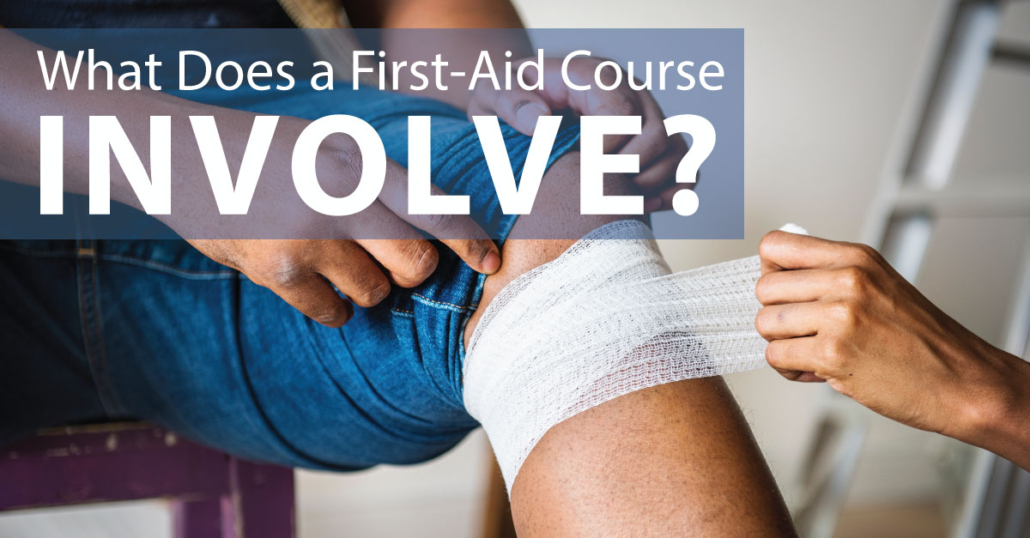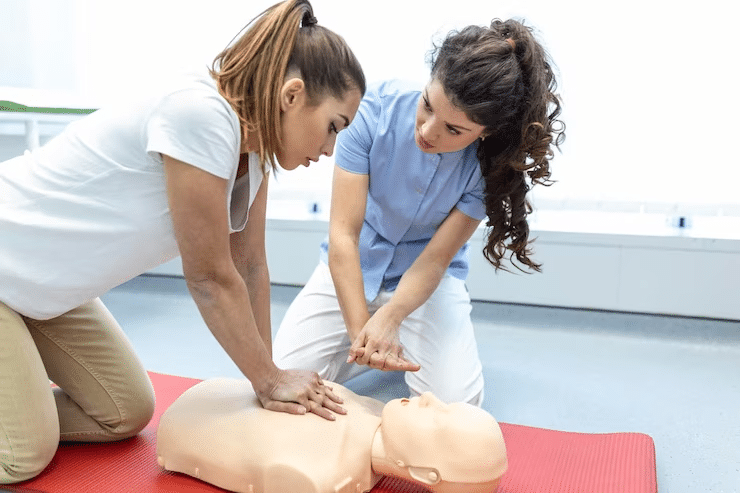Introduction
In an unforeseeable world, recognizing exactly how to conserve a life can be one of the most powerful ability one can have. Cardiopulmonary resuscitation, commonly referred to as mouth-to-mouth resuscitation, is an important device in emergency situation circumstances where someone's heartbeat has actually stopped. It's crucial for not just healthcare experts but also for ordinary citizens who desire to make a difference. This substantial short article explores the nuances of mouth-to-mouth resuscitation, including its significance, strategies, and the detailed training provided in CPR courses.
Understanding CPR: The Lifesaving Abilities Educated in Mouth-to-mouth Resuscitation Courses
CPR is greater than simply a series of compressions and breaths; it is a lifesaving method that combines expertise with practical skills. Comprehending mouth-to-mouth resuscitation includes identifying when it is necessary and implementing the proper steps successfully. The main purpose of CPR is to keep blood circulation to vital body organs up until specialist medical aid shows up.
Why Is Discovering mouth-to-mouth resuscitation Important?
Lifesaving Potential: Among the most compelling factors to learn CPR is its capability to conserve lives. According to the American Heart Organization (AHA), instant CPR can double and even triple a target's possibility of survival after cardiac arrest.
Common Occurrences: Cardiac arrests can occur anywhere-- at home, work, or public locations. Having individuals trained in mouth-to-mouth resuscitation enhances the chance of timely assistance.
Empowerment: Understanding CPR encourages individuals with the confidence and ability to act decisively during emergencies.
Community Impact: A neighborhood furnished with individuals learnt emergency treatment and CPR develops much safer atmospheres for everyone.
What Are the Objectives of a First Aid Course?
First help programs generally intend to gear up individuals with vital skills required in emergency situations:
- Understanding Basic Life Assistance (BLS): Individuals learn more about airway monitoring, breathing assistance, and flow restoration. Identifying Emergencies: Training includes recognizing various emergency situations like choking, sinking, or heart attacks. Learning Techniques: Practical sessions concentrate on hands-on knowing of methods such as upper body compressions and rescue breaths.
Types of CPR Courses Available
There are numerous kinds of CPR courses offered depending upon private needs:
Basic Life Assistance (BLS):- Aimed at doctor and professionals. Covers adult, kid, and infant resuscitation techniques.
- Designed for laypersons or non-healthcare professionals. Emphasizes emergency treatment fundamentals alongside adult/child/infant resuscitation.
- Convenient choice for those with tight schedules. Often consists of video clip demonstrations however does not have hands-on technique unless integrated with in-person sessions.
- Tailored programs created for specific work environment environments. Focus on relevant scenarios employees may encounter.
What Abilities Are Covered in First Aid and CPR Courses?
1. Acknowledging Emergencies
Participants learn how to determine essential scenarios requiring treatment quickly.
First Aid Courses Near Me2. Doing Upper Body Compressions
Chest compressions are basic in keeping blood flow during cardiac arrest.
3. Providing Rescue Breaths
Breathing strategies guarantee oxygen reaches important body organs when someone can not breathe independently.
4. Making Use Of an Automated External Defibrillator (AED)
Training usually includes exactly how to use an AED properly, which can bring back normal heart rhythms.
5. Dealing With Choking Incidents
Students are educated exactly how to execute https://privatebin.net/?20552d4c68dc5394#yoh8XNpk5DYbUVFnS71qHds4qJi5HpgLnFS8ZQ6Sb6Q abdominal drives on choking targets both grownups and infants.

6. Taking Care Of Other Medical Emergencies
Courses might likewise cover different clinical scenarios like strokes or severe allergic reactions.
The Importance of Accreditation After Finishing a Course
Obtaining a first aid certification after completing your training is vital for numerous reasons:
- It validates your abilities and knowledge. Many work environments require qualification for certain roles. It constructs trustworthiness amongst peers and companies concerning your preparedness to react in emergencies.
Detailed Explanation of Secret Techniques Taught in CPR Courses
Chest Compressions: The Structure of CPR
Chest compressions are probably the most crucial facet of executing effective cardiopulmonary resuscitation because they flow blood with a target's body also when their heart has actually stopped beating:
- Place your hands at the center of the person's chest. Keep your joints straight while weighing down hard and fast at a price of 100-- 120 compressions per minute. Allow full chest recoil between compressions for optimum blood flow.
Rescue Breaths: Providing Oxygen When It Issues Most
After every 30 breast compressions, it is crucial to give 2 rescue breaths if educated:
Open the air passage by turning the head back slightly. Pinch the nose closed while sealing your lips around their mouth. Give 2 breaths lasting regarding one 2nd each while expecting chest surge prior to continuing compressions.Recognizing Heart attack vs Various Other Emergencies
Understanding when to initiate CPR can be tricky however is critical:
- Look for unresponsiveness coupled with no typical breathing or pulse-- this shows cardiac arrest. In instances where there is still breathing but it appears uncommon (wheezing), call emergency situation solutions quickly prior to proceeding with rescue efforts.
Using AEDs Efficiently Throughout Emergencies
An Automated External Defibrillator (AED) provides clear directions through visual motivates and voice commands:
Turn on the AED as soon as you fetch it from its case. Attach pads according to images on them-- one pad ought to exceed the ideal nipple while one more goes listed below the left armpit. Ensure no person touches the victim while examining their heart rhythm; supply shock if suggested by gadget prompts.FAQs Regarding Understanding CPR
Q1: The length of time does it require to finish a first aid course?
A: Most first aid courses last between 4-- 8 hours depending on content depth; advanced certifications may call for longer sessions spread over multiple days.

Q2: Can I take a first aid course online?
A: Yes! Many organizations use mixed learning choices where academic parts are completed online complied with by practical analyses in person.
Q3: Is accreditation legitimate indefinitely?
A: No; certifications usually require renewal every two years due to developments in standards and methods within emergency feedback training industries like those entailed with CPR Course first aid courses or BLS qualifications specifically concentrated on effective care distribution techniques during situations encountered across different settings-- from homes via workplaces!
Q4: Will certainly I learn exactly how to help children or infants?
A: Yes! Many quality training courses cover strategies tailored particularly towards pediatric individuals along with adult-focused training components making certain wider applicability throughout age during emergencies came across day-to-day within our communities!
Q5: What are some common misunderstandings concerning carrying out CPR?
A: A widespread misconception is that you ought to not attempt any type of type until experienced experts show up; however acting promptly can significantly improve results if started properly making use of details obtained through structured programs like those supplied within First Aid & & CPD settings!
Q6: Do I need any kind of unique devices for my training session?
A: Normally speaking all necessary products will be offered by instructors including manikins utilized practice circumstances including both compression-only variations together with standard rescue breath layouts guaranteeing detailed understanding got throughout coursework carried out within assigned timeframes allotted as necessary based upon individual schedules/preferences!

Conclusion
In conclusion, recognizing cardiopulmonary resuscitation (MOUTH-TO-MOUTH RESUSCITATION) equips individuals with life-saving abilities that might indicate the difference in between life and death throughout emergencies involving heart attack or other health crises calling for prompt treatment before specialist help gets here! Registering on your own into licensed emergency treatment courses guarantees you're prepared needs to an unfortunate occasion happen around you-- empowering not only individual confidence but also cultivating neighborhood resilience overall! Whether you select on-line classes mixed learning methods standard class arrangements eventually leads in the direction of getting important understandings boosting feedback capabilities reacting properly among unpredictability dealt with frequently browsing unforeseeable conditions intrinsic daily living experiences shared collectively across society today!
By prioritizing education bordering these critical subjects we produce safer settings promoting stronger connections in between people making entire neighborhoods healthier holistically moving on with each other unified actively towards achieving typical goals visualized throughout shared journeys ahead loaded assurance hope better futures await us all-- one heart beat at time!